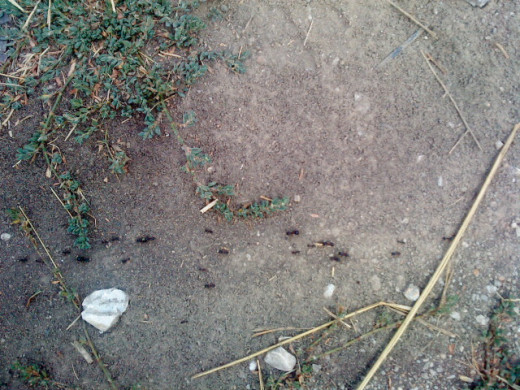The basics of TCP
Ant colony organization

TCP
TCP stands for Transmission Control Protocol and actually is the basics of modern computer communication. There is another protocol, called IP, or to be more specific Internet Protocol, which is also considered as the basics of Internet. Without these two protocols, we would still be in a informational blackout. However, smart people have invented this concept that all of us use. It is pretty simple to understand. Machine language is not simple as human language and it needs some proper addressing, formatting, routing until they reach teh desired, or so called final destination. Not everyone is IT professional and knows this stuff, so we will try to describe what this actually is. All communication is made by four layers. The first layer is called communication layer and it provides all the communications in a local network. For example, in a building people are connected through a local network. The second layer is the internet layer, and here clients from the local network can connect to the Internet, which is Network of many networks.The third layer is the transport layer. Here the communication between the hosts is made. The client who is searching for something is the starting point in this communication. The end point is the final destination, the desired address of the client. Finally the application layer is the last layer in the communication.With this layer the web browser of the starting point communicates with the webserver of the final destination. We hope that this explanation cleared some things. Let's get back to our subject. It is interesting to know that red ants use the TCP protocol in their quest for food. The TCP protocol is a relatively complex mathematical algorithm, but these smart little creatures are using it everyday. This is the basics of their organization. The simplified theory of TCP algorithm says that the source sends packages to the final destination, properly formatted and addressed. This is the popular PING command. The final destination tells the starting point that it received the packets that the starting point sent. This is how the connection can be tested. Ants work on similar principle. The organization sends ants outside for food. These workers go back when they found food. If the food is nearby, then you will see a lot of workers going outside and inside. Thus, a logical conclusion is that the traffic is very high. It is the same principle as TCP. There is this interesting fact, that ants do not send workers after an worker is not in the organization in 20 minutes. The technical term is REQUEST TIMED OUT. That is all about the comparation of the ant organization and technical explanation of the TCP. We hope that this article was helpful.



